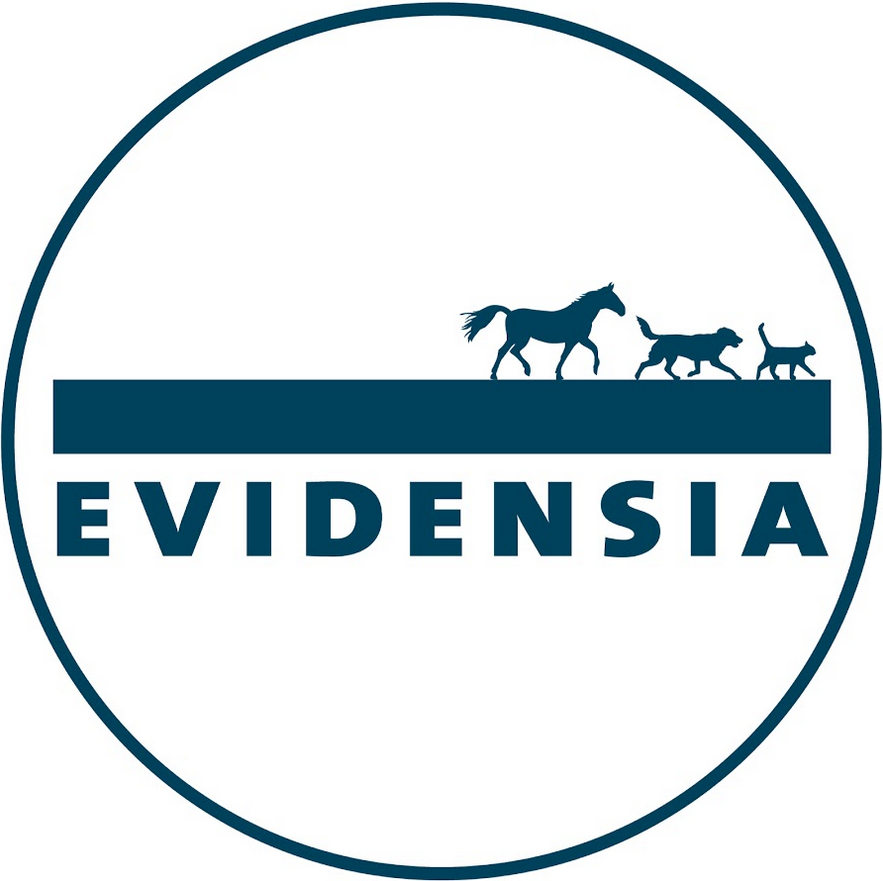Similar packages
Prascend
Active substance
ATC code
Species
Horses (non food-producing)
Indications
Symptomatic treatment of clinical signs associated with Pituitary Pars Intermedia Dysfunction (PPID) (Equine Cushing’s Disease).
Dose to be administered and administration route
Oral use.
The veterinary medicinal product should be administered, once daily.
To facilitate administration, the required daily dose should be placed in a small amount of water and/or mixed with molasses or other sweetener and agitated until dissolved. In this case, the dissolved tablets should be administered with a syringe. The whole amount should be administered immediately. Tablets should not be crushed. Do not use the veterinary medicinal product if you notice visible signs of deterioration or if the blister is breached.
Starting dose
The starting dose is 2 µg pergolide/kg (dose range: 1.3 to 2.4 µg/kg) body weight. Studies from the published literature cite the most common, average dose as 2 µg pergolide/kg with a range from 0.6 to 10 µg pergolide/kg (0.25 to 5 mg total daily dose per horse). The starting dose (2 µg pergolide/kg) should then be titrated according to the individual response as determined by monitoring (see below).
Starting doses are recommended as follows:
|
Horse body weight |
Number of tablets |
Starting dose |
Dosage range |
|
200 - 400 kg |
½ |
0.5 mg |
1.3 - 2.5 μg/kg |
|
401 - 600 kg |
1 |
1.0 mg |
1.7 - 2.5 µg/kg |
|
601 - 850 kg |
1 ½ |
1.5 mg |
1.8 - 2.5 µg/kg |
|
851 - 1000 kg |
2 |
2.0 mg |
2.0 - 2.4 µg/kg |
Maintenance dose
Life long treatment is anticipated for this disease.
Most horses respond to therapy and are stabilised at an average dose of 2 µg pergolide/kg body weight. Clinical improvement with pergolide is expected within 6 to 12 weeks. Horses may respond clinically at lower or varying doses; it is therefore recommended to titrate to the lowest effective dose per individual based on response to therapy, whether it is effectiveness or signs of intolerance. Some horses may require doses as high as 10 µg pergolide/kg body weight per day. In these rare situations, appropriate additional monitoring is advised.
Following initial diagnosis, repeat endocrinologic testing for dose titration and monitoring of treatment at intervals of 4 to 6 weeks until stabilisation or improvement of clinical signs and/or diagnostic testing occurs.
Clinical signs are: hypertrichosis, polyuria, polydipsia, muscle wasting, abnormal fat distribution, chronic infections, laminitis, sweating, etc.
The approach to treatment is the dose titration to the lowest effective dose per individual, based on response to therapy, whether it is effectiveness or signs of intolerance. Depending on the severity of the disease, time to treatment response may vary among individuals.
If clinical signs or diagnostic testing have not yet improved at the first 4 to 6 week interval, the total daily dose may be increased by 0.5 mg. In case clinical signs have improved but are not yet normalised, the veterinarian may decide to titrate or not to titrate the dose, considering the individual’s response/tolerance to the dose.
In case clinical signs are not adequately controlled (clinical evaluation and/or diagnostic testing) it is recommended to increase the total daily dose by 0.5 mg increments every 4 to 6 weeks until stabilisation occurs and if the drug is tolerated at that dose. If signs of dose intolerance develop, treatment should be stopped for 2 to 3 days and reinstated at one-half of the previous dose. The total daily dose may then be titrated back up to the desired clinical effect by 0.5 mg increments every 2 to 4 weeks. If a dose is missed, the next scheduled dose should be administered as prescribed.
Following stabilisation, regular clinical assessment and diagnostic testing should be performed every 6 months to monitor treatment and dose. Where there is no apparent response to treatment, the diagnosis should be re-evaluated.
Adverse reactions
Horses (non food-producing):
|
Rare (1 to 10 animals / 10,000 animals treated): |
Inappetence; anorexia1; lethargy1 Central nervous system disorder (e.g., central nervous system depression and ataxia)2 Diarrhoea; colic |
|
Very rare (< 1 animal / 10,000 animals treated, including isolated reports): |
Sudation |
1 Transient
2 Mild
If signs of dose intolerance develop, treatment should be stopped for 2 to 3 days and reinstated at one-half of the previous dose. The total daily dose may then be titrated back up to the desired clinical effect by 0.5 mg increments every 2 to 4 weeks.
Reporting adverse events is important. It allows continuous safety monitoring of a veterinary medicinal product. Reports should be sent, preferably via a veterinarian, to either the marketing authorisation holder or its local representative or the national competent authority via the national reporting system. See the package leaflet for respective contact details.
Dispensing
POM-V - Prescription Only Medicine – VeterinarianSUMMARY OF PRODUCT CHARACTERISTICS
1. NAME OF THE VETERINARY MEDICINAL PRODUCT
Prascend 1 mg tablets for horses
2. QUALITATIVE AND QUANTITATIVE COMPOSITION
Each tablet contains:
Active substance:
1.0 mg pergolide (as pergolide mesylate 1.31 mg)
Excipients:
For the full list of excipients, see section 6.1.
3. PHARMACEUTICAL FORM
Tablet
Pink, rectangular scored tablet, engraved on one side with the Boehringer Ingelheim logo and the letters “PRD”. The tablets can be divided into 2 equal parts.
4. CLINICAL PARTICULARS
4.1 Target species
Horses not intended for human consumption
4.2 Indications for use, specifying the target species
Symptomatic treatment of clinical signs associated with Pituitary Pars Intermedia Dysfunction (PPID) (Equine Cushing’s Disease).
4.3 Contraindications
Do not use in horses with known hypersensitivity to pergolide mesylate or other ergot derivatives or to any of the excipients. Do not use in horses less than 2 years of age.
4.4 Special warnings for each target species
Appropriate endocrinologic laboratory tests should be conducted as well as evaluation of clinical signs in order to establish a diagnosis of PPID.
4.5 Special precautions for use
Special precautions for use in animals
As the majority of cases of PPID are diagnosed in aged horses, other pathological processes are frequently present. For monitoring and frequency of testing, see section 4.9.
Special precautions to be taken by the person administering the veterinary medicinal product to animals
This product may cause eye irritation, an irritating smell, or headache after splitting. Minimise exposure risks when splitting tablets. Tablets should not be crushed.
Avoid contact with the eyes and inhalation when handling the tablets. Wash hands after use.
People with known hypersensitivity to pergolide or other ergot derivatives should avoid contact with the veterinary medicinal product and should not administer it. Pregnant or lactating women should wear gloves when administering the product.
In case of contact with skin, wash exposed skin with water. In the event of pergolide exposure to the eye, flush the affected eye immediately with water and get medical advice. For nasal irritation, move to fresh air and seek for medical attention if breathing difficulty develops.
Pergolide, like other ergot derivatives, may cause emesis, dizziness, lethargy or low blood pressure.
Do not ingest the product.
Store this product separately away from human medicinal products and handle this product with great care to avoid accidental ingestion.
In case of accidental ingestion, seek medical advice immediately and show the package leaflet or the label to the physician.
Avoid driving or operating machinery following ingestion of this product.
Children should not come into contact with the veterinary medicinal product. Accidental ingestion, especially by children, may cause adverse reactions.
4.6 Adverse reactions (frequency and seriousness)
In rare cases inappetence, transient anorexia and lethargy, mild central nervous system signs (e.g. mild depression and mild ataxia), diarrhoea and colic have been observed in horses. In very rare cases sweating has been reported. If signs of dose intolerance develop, treatment should be stopped for 2 to 3 days and reinstated at one-half of the previous dose. The total daily dose may then be titrated back up to the desired clinical effect by 0.5 mg increments every 2 to 4 weeks.
The frequency of adverse reactions is defined using the following convention:
- very common (more than 1 in 10 animals treated displaying adverse reaction(s))
- common (more than 1 but less than 10 animals in 100 animals treated)
- uncommon (more than 1 but less than 10 animals in 1,000 animals treated)
- rare (more than 1 but less than 10 animals in 10,000 animals treated)
- very rare (less than 1 animal in 10,000 animals treated, including isolated reports).
4.7 Use during pregnancy, lactation or lay
Pregnancy:
Use only according to the benefit/ risk assessment by the responsible veterinarian. The safety of this product has not been demonstrated in pregnant mares. Laboratory studies in mice and rabbits have not produced any evidence of teratogenic effects. Reduced fertility was seen in mice at a dose of 5.6 mg/kg body weight per day.
Lactation:
The use is not recommended in lactating horses, in which the safety of this product has not been demonstrated. In mice, reduced body weights and survival rates in the progeny were attributed to the pharmacological inhibition of prolactin secretion resulting in lactation failure.
4.8 Interaction with other medicinal products and other forms of interaction
Use with caution in case the product is co-administered with other drugs known to affect protein binding.
Do not administer concurrently with dopamine antagonists, such as neuroleptics (phenothiazines - e.g. acepromazine), domperidone, or metoclopramide, as these agents may reduce the effectiveness of pergolide.
4.9 Amounts to be administered and administration route
The product should be administered orally, once daily. To facilitate administration, the required daily dose should be placed in a small amount of water and/or mixed with molasses or other sweetener and agitated until dissolved. In this case, the dissolved tablets should be administered with a syringe. The whole amount should be administered immediately. Tablets should not be crushed.
Starting dose
The starting dose is 2 µg pergolide/kg (dose range: 1.3 to 2.4 µg/kg) body weight. Studies from the published literature cite the most common, average dose as 2 µg pergolide/kg with a range from 0.6 to 10 µg pergolide/kg (0.25 mg to 5 mg total daily dose per horse). The starting dose (2 µg pergolide/kg) should then be titrated according to the individual response as determined by monitoring (see below).
Starting doses are recommended as follows:
|
Horse body weight |
Number of tablets |
Starting dose |
Dosage range |
|
200 - 400 kg |
½ |
0.5 mg |
1.3 – 2.5 μg/kg |
|
401 - 600 kg |
1 |
1.0 mg |
1.7 – 2.5 µg/kg |
|
601 - 850 kg |
1 ½ |
1.5 mg |
1.8 – 2.5 µg/kg |
|
851 - 1000 kg |
2 |
2.0 mg |
2.0 – 2.4 µg/kg |
Maintenance dose
Life long treatment is anticipated for this disease.
Most horses respond to therapy and are stabilised at an average dose of 2 µg pergolide/kg body weight. Clinical improvement with pergolide is expected within 6 to 12 weeks. Horses may respond clinically at lower or varying doses; it is therefore recommended to titrate to the lowest effective dose per individual based on response to therapy, whether it is effectiveness or signs of intolerance. Some horses may require doses as high as 10 µg pergolide/kg body weight per day. In these rare situations, appropriate additional monitoring is advised.
Following initial diagnosis, repeat endocrinologic testing for dose titration and monitoring of treatment at intervals of 4 to 6 weeks until stabilisation or improvement of clinical signs and/or diagnostic testing occurs.
Clinical signs are: hirsutism, polyuria, polydipsia, muscle wasting, abnormal fat distribution, chronic infections, laminitis, sweating, etc.
The approach to treatment is the dose titration to the lowest effective dose per individual, based on response to therapy, whether it is effectiveness or signs of intolerance. Depending on the severity of the disease, time to treatment response may vary among individuals.
If clinical signs or diagnostic testing have not yet improved at the first 4 to 6 week interval, the total daily dose may be increased by 0.5 mg. In case clinical signs have improved but are not yet normalised, the veterinarian may decide to titrate or not to titrate the dose, considering the individual’s response/tolerance to the dose.
In case clinical signs are not adequately controlled (clinical evaluation and/or diagnostic testing) it is recommended to increase the total daily dose by 0.5 mg increments every 4 to 6 weeks until stabilisation occurs and if the drug is tolerated at that dose. If signs of dose intolerance develop, treatment should be stopped for 2 to 3 days and reinstated at one-half of the previous dose. The total daily dose may then be titrated back up to the desired clinical effect by 0.5 mg increments every 2 to 4 weeks. If a dose is missed, the next scheduled dose should be administered as prescribed.
Following stabilisation, regular clinical assessment and diagnostic testing should be performed every 6 months to monitor treatment and dose. Where there is no apparent response to treatment, the diagnosis should be re-evaluated.
4.10 Overdose (symptoms, emergency procedures, antidotes), if necessary
There is no clinical experience with massive overdose.
4.11 Withdrawal period(s)
Not authorised for use in horses intended for human consumption.
The horse must have been declared as not intended for human consumption under national horse passport legislation.
Not authorised for use in mares producing milk for human consumption.
5. PHARMACOLOGICAL PROPERTIES
Pharmacotherapeutic group: Dopamine agonist
ATCvet code: QN04BC02
5.1 Pharmacodynamic properties
Pergolide is a synthetic ergot derivative and is a potent, long-acting dopamine receptor agonist. Both in vitro and in vivo pharmacological studies have demonstrated the activity of pergolide as a selective dopamine agonist with little or no effect on norepinephrine, epinephrine or serotonin pathways at therapeutic doses. As with other dopamine agonists, pergolide inhibits the release of prolactin. In horses with Pituitary Pars Intermedia Dysfunction (PPID) pergolide exerts its therapeutic effect by stimulating dopamine receptors. Further, in horses with PPID, pergolide has been shown to decrease the plasma levels of ACTH, MSH and other pro-opiomelanocortin peptides.
5.2 Pharmacokinetic particulars
Pharmacokinetic information in the horse is available for oral doses of 2 µg pergolide/kg body weight and 10 µg pergolide/kg body weight. It has been demonstrated that pergolide is rapidly absorbed with a short time to peak concentration.
Peak concentrations (Cmax) following the dose of 10 µg/kg were low and variable with a mean of ~ 4 ng/ml and a mean terminal half-life (T ½) of ~ 6 hours. The median time of peak concentration (Tmax) was ~ 0.4 hours and the area under the curve (AUC) was ~ 14 ng x hours/ml. The terminal half-life in this study was much shorter than reported in humans. This is likely due to the sensitivity of the analytical assay in this study which did not allow for complete elucidation of the concentration - time profile. Therefore the rapid estimated rate of elimination in this study may not be a true reflection of the elimination phase.
In a more sensitive analytical assay, plasma concentrations following the dose of 2 µg pergolide/kg were very low and variable with peak concentrations ranging from 138 to 551 pg/ml. The peak concentrations occurred at 1.25 +/- 0.5 hours (Tmax). Plasma concentrations in most horses were quantifiable for only 6 hours post dose. However, one horse had quantifiable concentrations through 24 hours. Terminal half-lives were not calculated as there was incomplete elucidation of the plasma concentration-time curve for most horses.
Pergolide mesylate is approximately 90% associated with plasma proteins in humans and laboratory animals.
6. PHARMACEUTICAL PARTICULARS
6.1 List of excipients
Croscarmellose sodium
Ferric oxide red (E172)
Lactose monohydrate
Magnesium Stearate
Povidone K30
6.2 Major incompatibilities
Not applicable.
6.3 Shelf life
Shelf-life of the veterinary medicinal product as packaged for sale: 3 years.
6.4 Special precautions for storage
Do not store above 25°C.
Keep the blister in the outer carton.
6.5 Nature and composition of immediate packaging
Cold-formed blister (nylon/ aluminium/ UPVC // vinyl heat seal coating/ aluminium) containing 10 or 7 tablets:
Cardboard box containing 60 (6 blisters of 10) tablets
Cardboard box containing 100 (10 blisters of 10) tablets
Cardboard box containing 160 (16 blisters of 10) tablets
Cardboard box containing 480 (3 x the pack size of 160) tablets Cardboard box containing 91 (13 blisters of 7) tablets Not all pack sizes may be marketed.
6.6 Special precautions for the disposal of unused veterinary medicinal product or waste materials derived from the use of such products
Any unused veterinary medicinal product or waste materials derived from such veterinary medicinal product should be disposed of in accordance with local requirements.
7. MARKETING AUTHORISATION HOLDER
Boehringer Ingelheim Animal Health UK Ltd
Ellesfield Avenue
Bracknell
Berkshire
RG12 8YS
8. MARKETING AUTHORISATION NUMBER
Vm 08327/4300
9. DATE OF FIRST AUTHORISATION
11 March 2010
10. DATE OF REVISION OF THE TEXT
December 2020

Approved: 01 December 2020

| Art. Nr. | 08327/5036 |
|---|---|
| EAN | 5012917026139 |
 TRUSTED SOURCE
TRUSTED SOURCE








